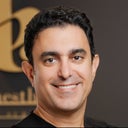Posted underEyelid Surgery q&a
What are the risk for steroid injection for post surgery scar tissue? (photos)
My plastic surgeon put in a hard palate graft in my lower lid in an attempt to fix my droopy lid (which was caused by a previous surgery) about 7 months ago. He is pleased with how the graft fixed the shape of my lid but the lid is still being pulled down when I open my mouth. The next step he said was a steroid injection to break up the scar tissue and hope that helps with the pulling. What are the risks with the shot? Do the effects of the shot last forever or do I need maintenance injections?
Answers (3)
From board-certified doctors and trusted medical professionals
Dr. A.J. Amadi, MD

Dr. A.J. Amadi, MD
Oculoplastic Surgeon, Board Certified in Ophthalmology
Answer
Dr. Kenneth D. Steinsapir, MD

Dr. Kenneth D. Steinsapir, MD
Oculoplastic Surgeon, Board Certified in Ophthalmology
Answer
Dr. Salvatore Pacella, MD, MBA, FACS

Dr. Salvatore Pacella, MD, MBA, FACS
Board Certified Plastic Surgeon
Answer
More Eyelid Surgery Questions
See all Eyelid Surgery Q&AWE SEND PRETTY
EMAILS
What’s trending? Who’s turning heads? Which TikTok myths need busting? We’ve got you. No fluff, no gatekeeping—just real talk. Get our free, unfiltered newsletter.
